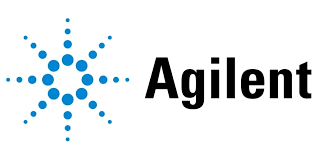Montessori Toys Market Size, Share, Industry Trends and Forecast to 2033
This comprehensive report on the Montessori Toys market provides an in‐depth overview of current market conditions, competitive dynamics, segmentation analysis, and technological innovations. Covering insights from market size and CAGR to region-wise performance and product segmentation, the report highlights key trends and forecasts for the period 2024 to 2033, offering valuable data for strategic planning and informed decision-making.
| Metric | Value |
|---|---|
| Study Period | 2024 - 2033 |
| 2024 Market Size | $1.50 Billion |
| CAGR (2024-2033) | 6.2% |
| 2033 Market Size | $2.61 Billion |
| Top Companies | EduPlay International, Montessori Creations Ltd. |
| Last Modified Date | 02 June 2025 |
Montessori Toys (2024 - 2033)
Montessori Toys Market Overview
What is the Market Size & CAGR of Montessori Toys market in 2024?
Montessori Toys Industry Analysis
Montessori Toys Market Segmentation and Scope
Request a custom research report for industry.
Montessori Toys Market Analysis Report by Region
Europe Montessori Toys:
Europe remains a significant player in the Montessori Toys market, with a market size that expands from 0.46 in 2024 to 0.80 in 2033. Strong regulatory standards and high consumer awareness regarding product safety and educational value drive market growth. European manufacturers emphasize quality craftsmanship and sustainable production methods, ensuring that products meet both educational and environmental standards. Collaborative efforts between educational institutions and toy manufacturers have further boosted market confidence.Asia Pacific Montessori Toys:
In the Asia Pacific region, the Montessori Toys market is poised for rapid expansion. With market size growing from 0.29 in 2024 to 0.50 in 2033, this growth is facilitated by rising urbanization, increasing disposable incomes, and a strong cultural emphasis on early childhood education. Manufacturers are tailoring products to meet diverse regional preferences while capitalizing on the growing e-commerce platforms that enhance market reach. Investments in digital technologies and localized marketing strategies are expected to further drive this growth.North America Montessori Toys:
In North America, the Montessori Toys market demonstrates robust expansion, with sizes moving from 0.52 in 2024 to 0.90 in 2033. Here, consumer trends strongly favor innovative, sustainable, and technology-integrated educational products. The market benefits from advanced research and regulatory frameworks that ensure high safety standards. With a shift towards personalized and digital learning aids, North American companies are at the forefront of product innovations that cater to evolving consumer lifestyles.South America Montessori Toys:
South America exhibits promising potential despite being a smaller market segment, with market size increasing from 0.04 in 2024 to 0.08 in 2033. The region is characterized by increasing consumer education about the benefits of early learning and the supportive role of government initiatives in education. As awareness grows, there is a gradual shift towards premium educational toys, with local manufacturers and global brands alike competing to secure market share.Middle East & Africa Montessori Toys:
The Middle East and Africa region shows promising signs of growth in the Montessori Toys market, with market size anticipated to rise from 0.19 in 2024 to 0.34 in 2033. While the market is still in a nascent stage compared to other regions, increasing investments in early education and rising parental awareness are key growth drivers. Local and international brands are gradually entering these markets, deploying tailored strategies to meet varying consumer demands and overcome infrastructural challenges.Request a custom research report for industry.
Montessori Toys Market Analysis By Product Type
Global Montessori Toys Market, By Product Type Market Analysis (2024 - 2033)
The product type segmentation in the Montessori Toys market plays a pivotal role in driving overall market growth. This segment includes educational toys, sensory toys, role play toys, wooden toys, plastic toys, and fabric toys. Each category is defined by unique attributes; for instance, educational toys and wooden toys command significant market shares with a size growing from 0.92 in 2024 to 1.61 in 2033 and a consistent share of 61.45%. Sensory and role play toys, though smaller in scale, contribute significantly by offering specialized developmental benefits. The technological integration in product development has led to increased interactivity and learning outcomes. Manufacturers are utilizing eco-friendly materials and fostering innovations that align with modern educational philosophies, ensuring strong market competitiveness in urban and global markets.
Montessori Toys Market Analysis By Age Group
Global Montessori Toys Market, By Age Group Market Analysis (2024 - 2033)
Segmenting the market by age group enables a precise alignment of product offerings with developmental milestones. The market is categorized into infants (0-12 months), toddlers (1-3 years), preschoolers (3-5 years), and school-age children (5-7 years). The infants segment holds the largest share, registering a market size increase from 0.85 in 2024 to 1.49 in 2033 and maintaining a constant share rate of 56.94%. Toddlers, preschoolers, and school-age segments, while smaller, are essential for bridging developmental stages with specialized educational content. This segmentation analysis demonstrates that early childhood represents a critical focus area, where both product innovation and marketing are concentrated to meet the evolving needs of each age group.
Montessori Toys Market Analysis By Material Type
Global Montessori Toys Market, By Material Type Market Analysis (2024 - 2033)
Material type segmentation in the Montessori Toys market differentiates products based on their construction, including wooden, plastic, and fabric materials. Both wooden and plastic toys demonstrate parallel performance, with market sizes increasing from 0.92 in 2024 to 1.61 in 2033 and each maintaining a share of 61.45% and 22.29% for plastic respectively. Fabric toys also contribute by emphasizing tactile experience and safety. This segmentation is essential as consumer preferences shift towards sustainable and non-toxic materials. Manufacturers are increasingly investing in eco-friendly production methods, ensuring that products not only adhere to safety standards but also contribute to long-term sustainability and brand trust.
Montessori Toys Market Analysis By Distribution Channel
Global Montessori Toys Market, By Distribution Channel Market Analysis (2024 - 2033)
Distribution channel segmentation divides the market into online and offline retail avenues. Online retail is dominating the scene with a marked increase in market size from 1.26 in 2024 to 2.20 in 2033, capturing a substantial share of 84.3%. Offline retail remains important, ensuring personalized customer service and in-store experiences, with market size growing modestly from 0.24 in 2024 to 0.41 in 2033 and holding a 15.7% share. This segmentation reflects the digital transformation impacting consumer purchase behaviors. Enhanced digital marketing strategies, combined with robust e-commerce infrastructure, are proving pivotal in driving sales and expanding market reach in both traditional and modern retail platforms.
Montessori Toys Market Analysis By Target Market
Global Montessori Toys Market, By Target Market Market Analysis (2024 - 2033)
The target market segmentation encompasses key consumer groups such as parents and guardians, educators, and educational institutions. Among these, parents and guardians form the largest target segment, with market size increasing from 0.92 in 2024 to 1.61 in 2033 and a corresponding share of 61.45%. Educators and educational institutions, though smaller in scale, also show notable growth, each reflecting steady increases and a share pattern that underscores the importance of formal education settings. This segmentation underscores the diverse and strategic focus required in marketing efforts, helping brands to tailor their offerings and communication strategies to resonate with each target group effectively.
Montessori Toys Market Trends and Future Forecast
Request a custom research report for industry.
Global Market Leaders and Top Companies in Montessori Toys Industry
EduPlay International:
EduPlay International is a pioneering company in the Montessori Toys sector, known for integrating educational research with innovative toy design. The company excels in developing sustainable and technologically advanced products that cater to diverse age groups and markets. Their commitment to quality and safety has positioned them as a trusted brand across multiple regions.Montessori Creations Ltd.:
Montessori Creations Ltd. is renowned for its focus on traditional craftsmanship combined with modern educational trends. With a strong emphasis on research and development, the company offers a wide range of products that promote creative learning and developmental skills, making it a leading player in the global market.We're grateful to work with incredible clients.









Related Industries
FAQs
What is the market size of Montessori toys?
The Montessori toys market is valued at approximately $1.5 billion with a projected CAGR of 6.2% from 2024 to 2033. The growth indicates increasing popularity and demand for educational toys that align with Montessori principles.
What are the key market players or companies in the Montessori toys industry?
Key players in the Montessori toys market include leading brands such as Melissa & Doug, Hape International, and PlanToys. Their commitment to quality educational toys drives the industry's growth and innovation.
What are the primary factors driving the growth in the Montessori toys industry?
Growth in the Montessori toys industry is primarily driven by rising parental awareness about child development, an increase in disposable income, and the growing popularity of educational toys that promote hands-on learning and creativity.
Which region is the fastest Growing in the Montessori toys market?
The Asia Pacific region is currently the fastest-growing market, with the market size projected to reach $0.50 billion by 2033. This growth is fueled by increasing urbanization and rising demand for quality educational tools.
Does ConsaInsights provide customized market report data for the Montessori toys industry?
Yes, ConsaInsights offers customized market report data tailored to specific needs and insights within the Montessori toys industry, ensuring clients receive relevant and actionable market analysis.
What deliverables can I expect from this Montessori toys market research project?
From this market research project, clients can expect detailed reports, market trends analyses, segmented data insights, and strategic recommendations to effectively navigate the Montessori toys market landscape.
What are the market trends of Montessori toys?
Current trends in the Montessori toys market include a shift towards sustainable materials, the rise of online retail channels, and increasing demand for toys that promote STEM learning and sensory development.
Customize Montessori Toys market research report
- ✔ Get in-depth analysis of Montessori Toys market size, growth, and forecasts.
- ✔ Understand Montessori Toys's regional dynamics and industry-specific trends.
- ✔ Identify potential applications, end-user demand, and growth segments in Montessori Toys
